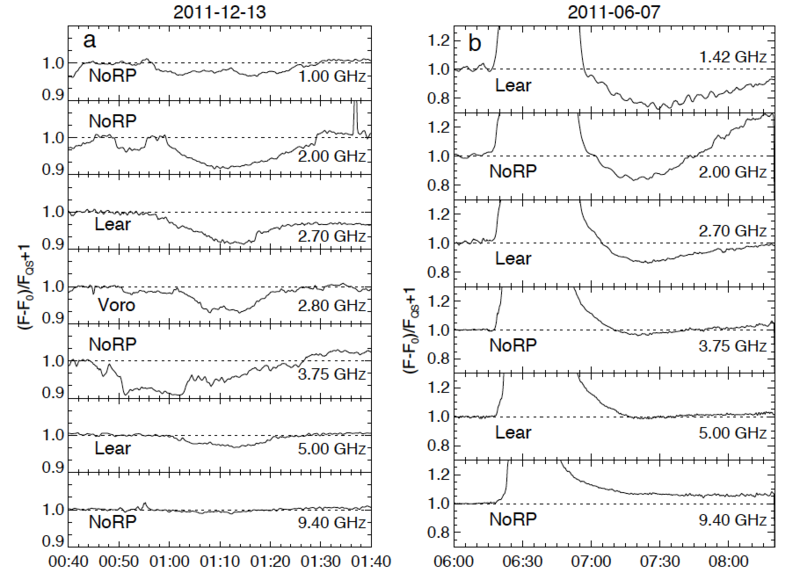Negative Microwave Bursts
From RHESSI Wiki
| Nugget | |
|---|---|
| Number: | 206 |
| 1st Author: | Victor Grechnev |
| 2nd Author: | |
| Published: | August 21, 2013 |
| Next Nugget: | TBD |
| Previous Nugget: | Acceleration-region Densities |
| List all | |
Introduction
The microwave spectrum, observable by radio observatories, has a close relationship with the X-ray spectrum as observed by RHESSI. Typically one sees bursts in both spectral bands, but - rarely - one sees negative bursts in the microwaves. Such bursts were described in the 1950s by the eminent radio astronomer Arthur Covington, who also introduced the much-used F10.7 radio index of solar activity. The negative bursts are in a sense easy to understand - the whole Sun emits microwave radiation from near the base of the corona, and so a relatively cool and absorbing coronal feature - for example, a prominence - may obscure parts of this emission. Indeed, Covington had also used the Moon (via an eclipse observed in Ottawa, in 1946!) as an absorber to show that solar radio emission was concentrated spatially in sunspot regions and to establish the importance of magnetism in solar activity.
The physics of negative microwave bursts may not be simple, and therefore many things may be learned about the behavior of the solar corona by observing it with modern equipment. This includes not only the microwave domain, but also the EUV as currently observed, for example, via the [Solar Dynamics Observatory http://sdo.gsfc.nasa.gov/] among others. We have now begun further studies of these phenomena, as introduced in Ref. [1].
Some examples
Negative microwave bursts often accompany solar flares, but that is not always the case. Sometimes coronal activity can result in sudden absorptions in the absence of an obvious flare or CME; we show examples of non-flare (left) and flare (right) negative bursts in Figure 1. movies of the latter make the possible utility of microwave absorption quite obvious!
The radio observatories involved in the observations of Figure 1 are in Australia ([Lear]), Japan ([NoRP]), and Russia ([Voro}), and one can clearly see the wavelength dependence (the [free-free] opacity increases as the square of the wavelength).
References
| RHESSI Nugget Date | 21 August 2013 + |
| RHESSI Nugget First Author | Victor Grechnev + |
| RHESSI Nugget Index | 206 + |
